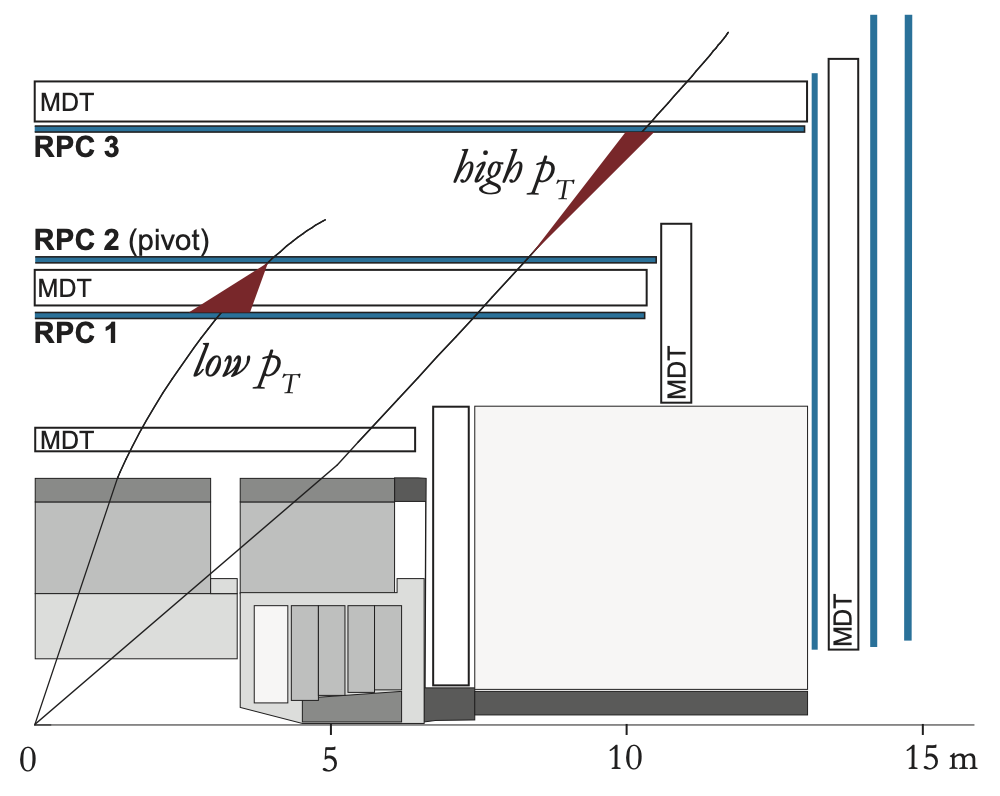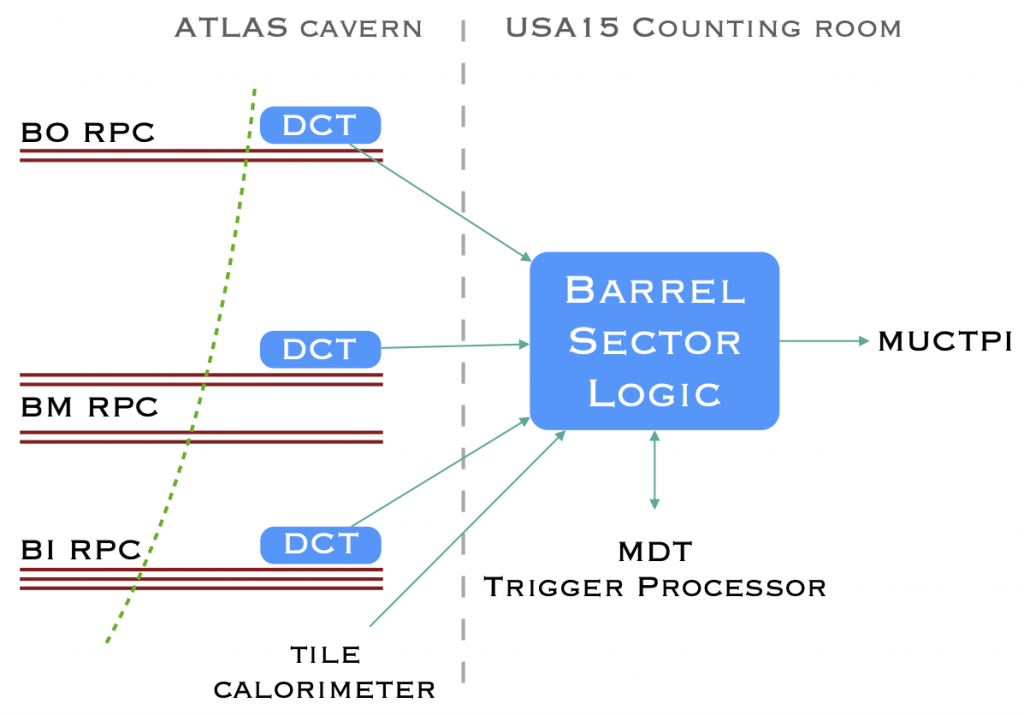The trigger system of any collider experiment is the essential component responsible of deciding whether or not to keep a given bunch crossing interaction data for the offline analysis studies. The presence of prompt muons in the final state is a distinctive signature for many physics processes in high energy proton collisions at the LHC, therefore a high-performance muon trigger is essential.
The current ATLAS trigger system is made of a first hardware based system, called Level-1, and a second software based system, called High Level Trigger (HLT). The Level-1 provides 100 kHz data to the HLT, which then selects about about 1.5 kHz of events recorded for the offline analysis. About 20 kHz Level-1 data are allo- cated for muon triggers, and about 150 Hz are the muon events selected by the HLT.
Muons are identified at Level-1 in the barrel region (|η| < 1) by the spatial and temporal coincidence of hits in the Resistive Plate Chamber (RPC) detectors point- ing to the beam interaction point, as shown below. The low-pT trigger requires a coincidence in the middle RPC layers while the high-pT trigger requires a further coincidence of hits in the outer RPC layer. The degree of deviation from the hit pattern expected for a muon with infinite momentum is used to estimate the pT of the muon.

The ATLAS-Roma group was responsible of the de- sign, realisation and installation of the Level-1 barrel trigger system and was in charge of its commissioning and data taking in the early years of LHC functioning (Run-1, 2011 to 2013) [1]. During the Long-Shutdown-1 (LS1, from mid 2013 to mid 2015) the group successfully installed the completion of the barrel trigger system in the lower part of the spectrometer, which makes use of new additional RPC chambers in the feet region and in the elevators region, to recover respectively about 3% and 0.8% geometrical acceptance. During Run-2 (2015 to 2018) the group successfully commissioned the new additional trigger regions and continued to be in charge of the maintenance and operation of the full system, including RPC timing calibrations and efficiency studies. A stable and smooth data taking was guaranteed during the full Run-2 operations. The current system will be continued to be operated by our group also in Run-3 (2021-2024), when the LHC luminosity will be twice the nominal luminosity of 1034 cm2s-1 .
Run-4 (from 2026, the so-called High Luminosity LHC) will be characterised by an increase of luminosity of about a factor of 5. These high demanding conditions impose to completely replace the current Level-1 trigger system. The figure below shows the scheme foreseen for the Run- 4 new Level-0 barrel muon trigger. The on-detector Data Collector Transmitter boards (DCT) sample and time tag the RPC hits and send the data to the off-detector Sector Logic boards (SL) which perform the coincidence based Level-0 trigger algorithm. The foreseen Level-0 trigger rate is 1 MHz, 50 kHz of which will be allocated for muon events. The Roma group is responsible of the full upgrade of the Level-0 barrel muon trigger system, and it is supposed to play a leading role in the whole trigger system as it did in the past.

References
- F. Anulli et al.,”The Level-1 Trigger Muon Barrel System of the ATLAS Experiment at CERN”, JINST Volume: 4 Article Number: P04010 (2009).
- The ATLAS Collaboration, “ATLAS Trigger and Data Acquisition Phase-II Upgrade Technical Design Report”, CERN-LHCC-2017-020; ATLAS-TDR-029; https://cds.cern.ch/record/2285584